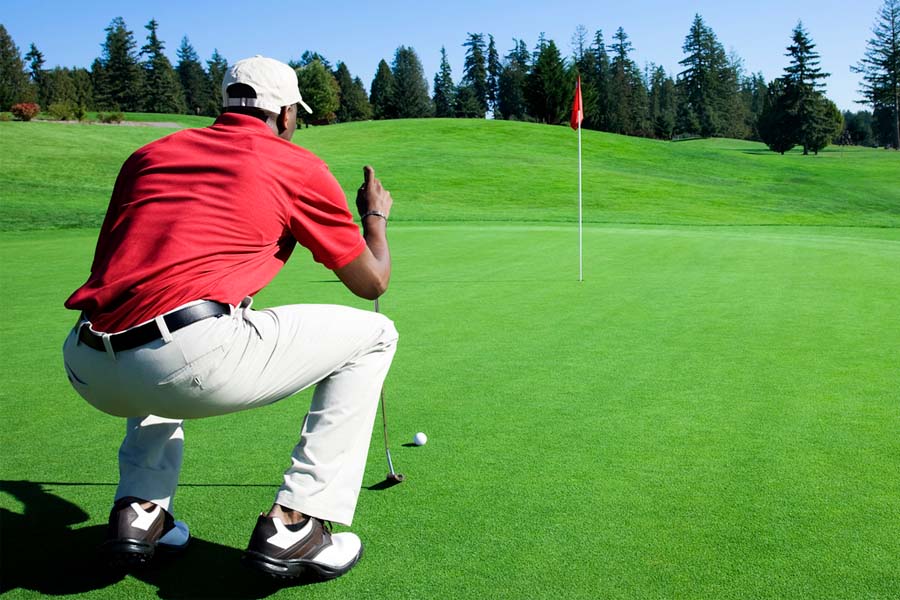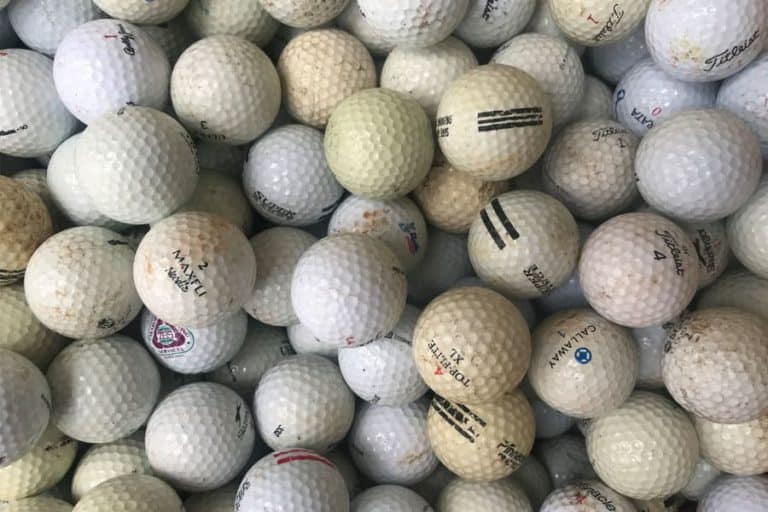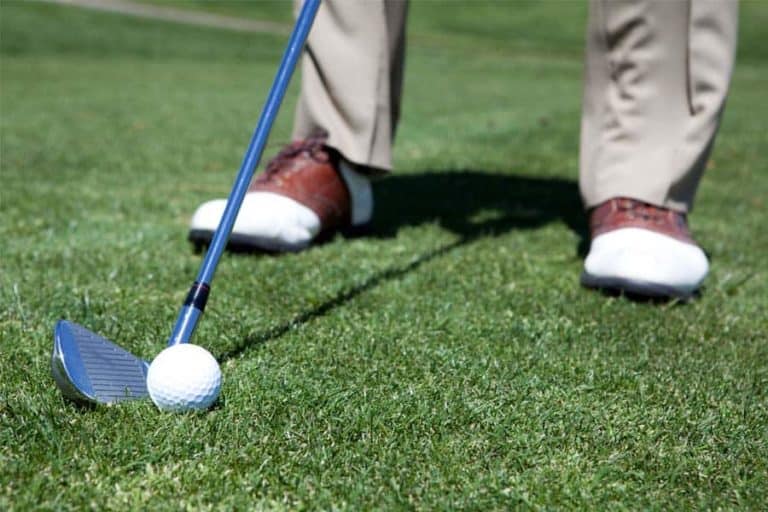How To Putt In Golf – A Beginner’s Guide

Learn the basics, from stance and grip to strategy, on how to putt in golf correctly. Plus, 9 tips that will help you improve your putting game.
Learn the basics, from stance and grip to strategy, on how to putt correctly. The guide is comprised of nine tips that will help you improve your putting game.
Putting is one of the most important aspects of golf. If you’re a beginner golfer, putting can be one of the most frustrating aspects of the game. You won’t score well if you can’t master your putts.
We bring you nine tips that will help you improve your putting game and teach you the basics of how to putt in golf, including how to read greens and line up your shot. Use these tips to make more putts and lower your scores. With practice, you’ll be sinking those putts like a pro!
I. How to putt: Golf putting tips
Putting is often said to be the hardest part of golf. Many amateurs spend hours on the driving range, trying to perfect their swing, only to see their scorecard littered with three-putts.
If you’re ready to take your game to the next level, here are the must-know how to putt correctly.
1. Find the sweet spot
Find your sweet spot. Every putter has a sweet spot, and it’s important to find yours. This is the spot on the face of the putter where the impact will be greatest, and it’s usually located near the center.
To find your sweet spot, take some practice strokes without a ball, and make a note of where the putter is contacting the ground. Once you’ve found it, mark the spot with a piece of tape or a dot of paint.
2. Replacing and Marking the Ball
The first thing you should do when your golf ball is on the green and it’s your turn to putt is to mark it with a coin or flat marker. We recommend you to do this for several reasons, mainly so that other players can more easily putt around our ball. By marking the ball on the green, you can clean your golf ball and replace it in a way that benefits your game.
3. Use A Firm Grip
Your grip is an essential part of your putting stroke. The grip is what contributes to the stability of your club.
Many novice players grip their putters too lightly, thinking they need to have a delicate touch. In reality, you need to grip the putter firmly to achieve consistent contact and minimize off-center hits.
A good rule of thumb is to grip the putter as if you were shaking someone’s hand.
4. Minimize your movement
Precision is key when putting, as opposed to long shots where more power is necessary. Too much movement in your lower body can negatively affect the outcome of your putt.
For a successful putt, keep your feet planted firmly on the ground and avoid too much movement from your torso and swing. By keeping your lower body steady, you minimize the risk of inaccurate shots and increase your chance for success.
5. Set Up Square To Your Target Line
When you’re standing over the ball, take a moment to ensure that your feet, hips, and shoulders are all square to your target line. If they’re not, make the necessary adjustments until they are. This will help you make more consistent strokes.
6. Keep Your Eyes Down
It’s important to keep your eyes focused on the ball when you putt. Study the hole for a while before you start taking a stance for your putting stroke. Once you have analyzed the lay around the hole, you want to be looking at the ball, not at the hole. Keep your eyes down and track the ball’s path, study its movement, and make adjustments if necessary.
7. Make A Smooth Stroke
Finally, it’s important to make a smooth stroke when you putt. Many novice players try to hit the ball too hard, resulting in a jerky, inconsistent stroke. Instead, focus on making a smooth, even stroke and letting the weight of the putter do the work.
8. Balance your backstroke
One of the most important aspects of putting is the backstroke. This is what controls the distance of your putts. For a short putt, you only need a short backstroke. If you have a long putt, you’ll need a longer backstroke.
If your backstroke is too large, your body will attempt to stop or decelerate. This can make your putter face less stable. So, when you’re practicing your putts, pay attention to your backstroke.
Make sure it’s the right length for the distance of your putt. And remember, a small backstroke can go a long way.
9. Reading the Green
Putts are notoriously tricky, and even the pros miss them from time to time. That’s why it’s important to take the time to read every putt before you take your shot.
Pay attention to the lie of the land and where the high point is. Then, walk around the hole to get a different vantage point. Once you have a clear picture of the green, it’s time to align your shot.
Remember, don’t rush! Take your time and make sure you have a smooth and accurate swing to achieve the perfect stroke. With a little observation and patience, you will nail that putt in no time.
10. Consider face inserts with grooves
Face inserts are a common feature of modern putters, and they can offer a number of performance benefits. One of the key functions of face inserts is to help control the speed of the ball at impact.
Deeper grooves spaced tightly together can produce less ball speed than shallower grooves spaced further apart. This can be beneficial for reducing skidding and jumping and inducing pure roll as early as possible after impact.
However, it’s important to be aware of the USGA rules on face insert designs. If the width or spacing of the grooves exceeds certain limits, the putter may not be legal for tournament play. Ultimately, face inserts can be helpful performance enhancers, but it’s up to the golfer to ensure that their technique is within the rules.
II. How to grip your putter?
For many amateur golfers, one of the most challenging aspects of the game is getting a good grip on the putter.
The typical grip puts the left hand below the right, but some variations can be useful for different types of shots. For example, some players find it helpful to place their hands further apart on the grip, while others prefer to have them closer together.
Experiment with different grips and see what works best for you. In general, you want to hold the putter lightly but not very loosely in your hands. But keep your wrists firm. This will help you to create a smooth, consistent stroke.
Remember, a good grip is essential for making accurate putts, so take the time to find one that feels comfortable and gives you the results you’re looking for.
III. How should you stand?
There are many different ways to stand when playing a golf shot; however, the steps mentioned below can help you to take the perfect stance:
- Your feet should be shoulder-width apart and your weight evenly distributed. This will help you maintain your balance throughout the swing.
- Flex your knees slightly and keep your spine straight. This will help you generate power while remaining stable.
- Align your club with the ball before taking your swing. This will help ensure that you make solid contact with the ball.
By following these simple tips, you can develop a strong and reliable stance that will help you improve your game.
IV. How to align your body?
When taking a golf shot, proper body alignment is essential for achieving the desired results.
- Ensure that your feet are shoulder-width apart and facing the target.
- Bend slightly at the knees and hips so that your weight is evenly distributed.
- Inhale deeply before raising your arms so that they are parallel to the ground. At this point, you should be looking directly down at the ball.
- Take a smooth swing and follow through with your arms to complete the shot.
These simple steps can ensure that your body is properly aligned for a successful putt.
V. How to swing?
The key to a good stroke is to keep your arms straight and to swing the clubhead in a pendulum motion. Here’s a step-by-step guide to help you perfect your technique:
- Start by gripping the club and placing it on the ground.
- Swing the club back. As you take your backswing, turn your shoulders and hips away from the target.
- As you start your downswing, shift your weight forward and allow your arms to drop down naturally.
- When you make contact with the ball, give it a slight tap to send it rolling toward the hole.
- Remember to keep your follow-through low to avoid hitting the ball too high.
VI. How to putt better?
A smooth stroke is important when playing a shot in golf because it helps to create a consistent swing and minimize the risk of injuries. Several factors can affect the smoothness of your stroke, including
- Grip
- Stance
- Type of club
Practicing with different clubs and working on your grip and stance will help you find what works best for you and make your stroke smoother. In general, it is important to keep your wrists relaxed, grip the club lightly, and maintain a wide stance.
Conclusion
Now that you understand the basics of how to putt in golf, it’s time to start practicing. If you can master your putting game, you’ll see a drastic improvement in your scores. The basics of putting, from stance and grip to strategy, are important before you start working on your putting game.
Once you have the basics down, you can master the techniques and incorporate the above tips, you’ll be on your way to becoming a putting pro in no time!







